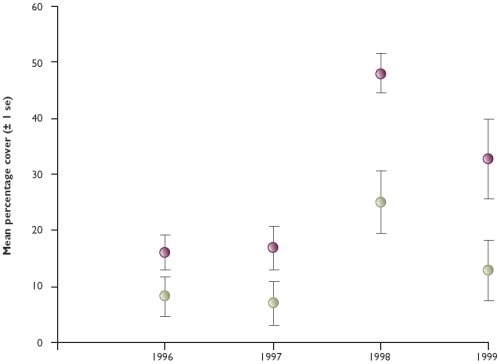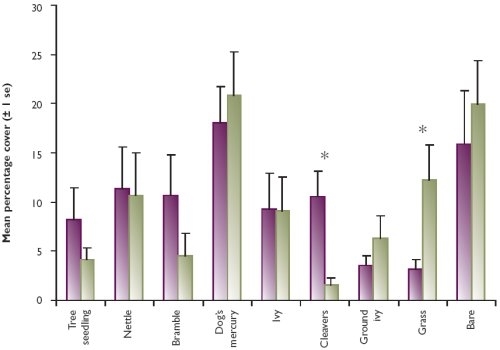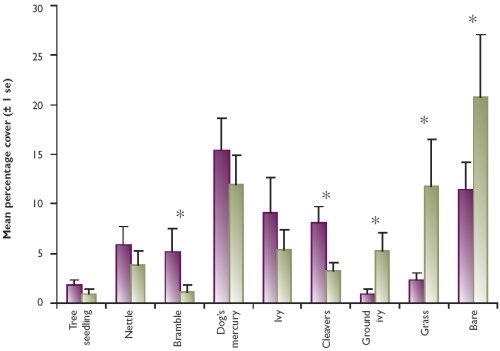Key findings
- Vegetative cover was greater where deer were excluded.
- Some plant species increased when grazing was removed and some decreased.
- Woods with greater vegetative cover are better for pheasants and other wildlife.
With one or more species of deer found in almost every parish, most keepers must cope with deer. A herd of fallow in a cover crop can be devastating, and unprotected coppice will grow little if there are a lot of roe browsing there. An electric fence protects the former, and piling brash on cut stools usually mitigates the latter. What people fail to see are the more subtle effects. Even with systematic culling, deer may be having more effect on habitat than is realised.
We assessed the impact of a density of around nine roe deer per 100 hectares on ground and shrub vegetation in six small woodlands on a largely arable estate in Dorset. The woods were about 10% of the total area. In January 1996, we erected 30 deer exclosures, each two metres square and 1.5 metres high, five in each of the six small woods. Each exclosure was paired with a nearby control plot for comparison. We measured vegetation at six heights using a cover board in late winter and mid-summer in each of the following four years.
Vegetative cover was increased by excluding deer and the effect increased significantly during the four-year study period (see Figure 1). Also, plant species composition changed in the exclosure plots compared with the controls by the end of the study period (see Figure 2 summer, and Figure 3 winter) with, for example, more bramble and less bare ground and grass where grazing was removed.
Figure 1: Average vegetative cover (%) up to one metre from the ground in deer exclosure and grazed plots in six study woodlands in winter

The effect of the deer, represented by the difference between the two points in each year, was much greater in years 3 and 4 than in years 1 and 2, indicating that the effect of grazing each season accumulated over time. We observed similar differences and trends between years in the summer.
People have suggested that where deer occur in large woodland blocks at densities of less than 10 per 100 hectares, there may be little or no effect on woodland vegetation. Our work on farmland with small woods, suggest that small numbers of deer do affect vegetation because they are concentrated.
Although browsing is a natural ecological process and can maintain or enhance the conservation interest of some habitats, unbrowsed shrubby cover provides habitat for many species. Woods with plenty of cover hold more pheasants during the shooting season and in the spring and summer. Many woodland birds, particularly warblers, small mammals, butterflies and moths like woods with shrubs and a ground flora. Our study shows that browsing in small farm woods, even by a few roe deer, can reduce the conservation value of these areas.
Figure 2: Percentage cover of dominant vegetation species in deer exclosures (fenced) and grazed areas in summer 1999

Figure 3: Percentage cover of dominant vegetation species in deer exclosures (fenced) and grazed areas in winter 1999

Acknowledgements
We wish to thank Tim Palmer on whose land we conducted the work, and Hugh Oliver-Bellasis and The British Ecological Society for helping to fund the study.